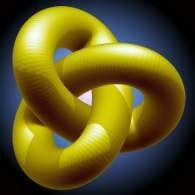Research highlight: existence of Turing complete Euler flows
May 05, 2021
Robert Cardona and Eva Miranda from IMTech, together with Daniel Peralta and Francisco Presas from ICMAT (Madrid), have recently shown the existence of Turing complete fluid flows on a three-dimensional geometric domain, thus solving a long-standing open problem. The result has been published in an article in the Proceedings of the National Academy of Science. For more on this topic linked to the Navier-Stokes problem see the recent online lecture by Terence Tao (UCLA).
We include the abstract of the article: Can every physical system simulate any Turing machine? This is a classical problem that is intimately connected with the undecidability of certain physical phenomena. Concerning fluid flows, Moore [C. Moore, Nonlinearity 4, 199 (1991)] asked if hydrodynamics is capable of performing computations. More recently, Tao launched a program based on the Turing completeness of the Euler equations to address the blow-up problem in the Navier–Stokes equations. In this direction, the undecidability of some physical systems has been studied in recent years, from the quantum gap problem to quantum-field theories. To the best of our knowledge, the existence of undecidable particle paths of three-dimensional fluid flows has remained an elusive open problem since Moore’s works in the early 1990s. In this article, we construct a Turing complete stationary Euler flow on a Riemannian 𝕊3 and speculate on its implications concerning Tao’s approach to the blow-up problem in the Navier–Stokes equations.

Share: